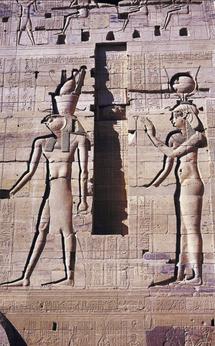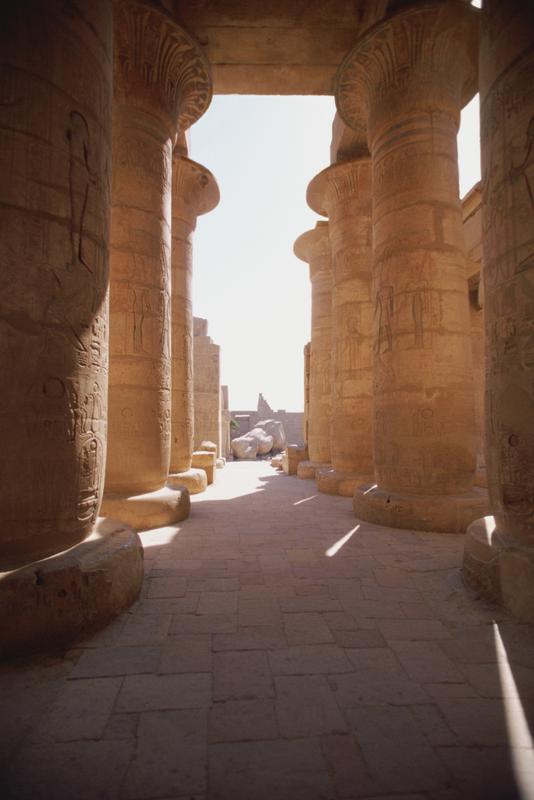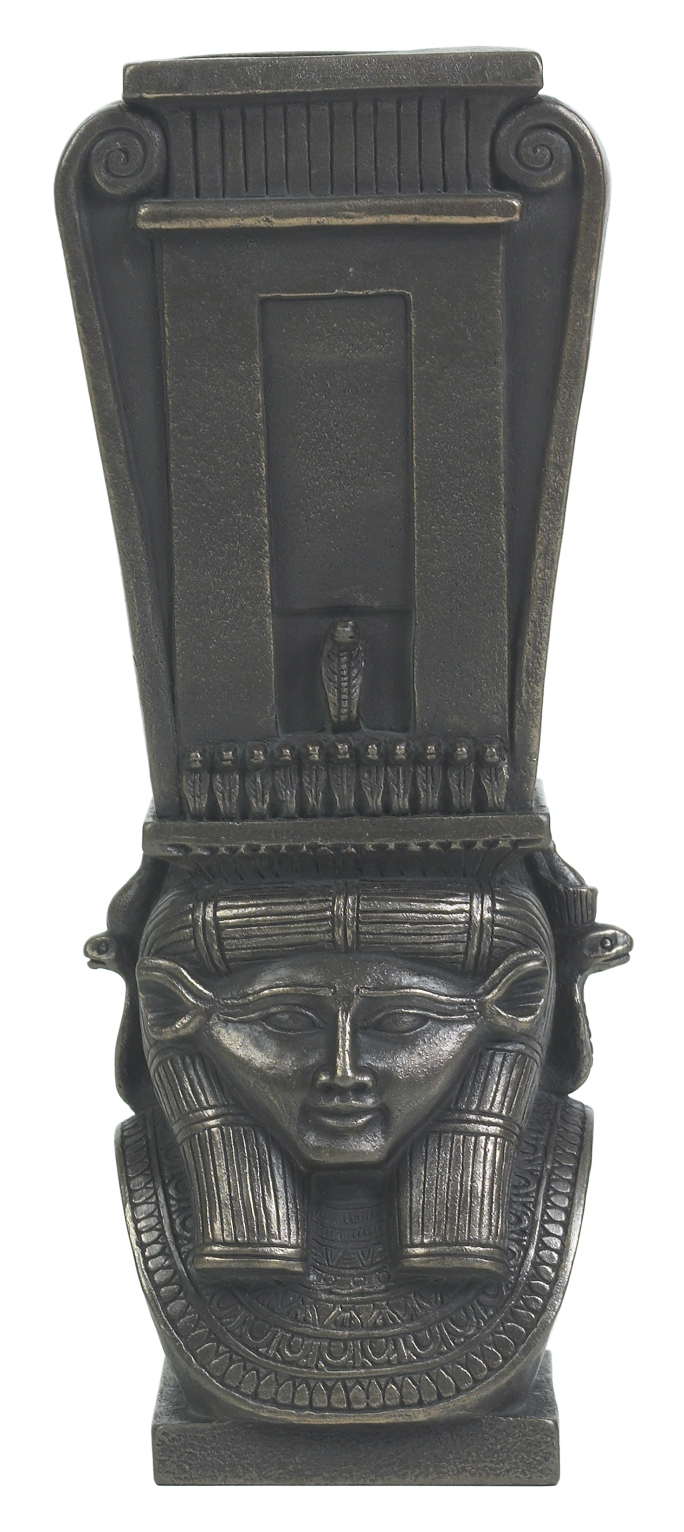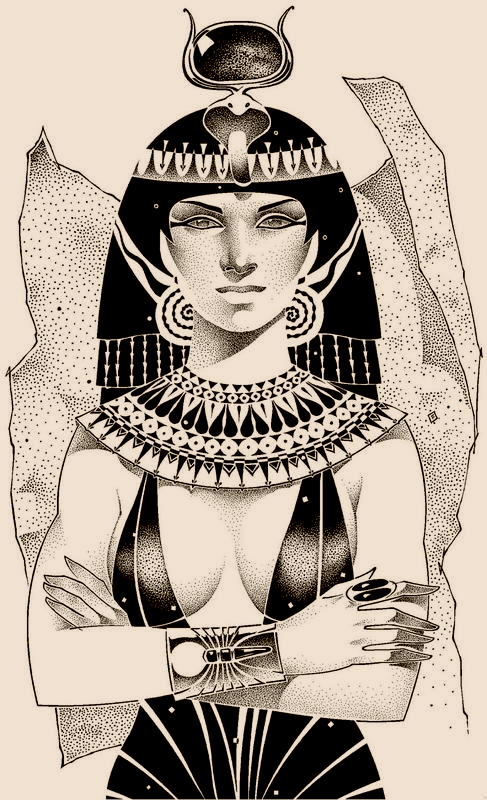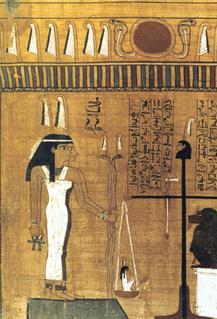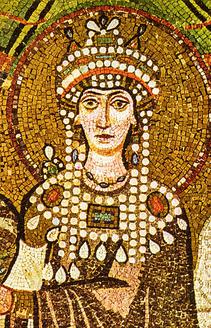Women's Travel Abroad
For Women About Women By Women
Related
You Are Welcome to Contact Me Personally With Comments or Questions
Copyright 2017 Creative Travel Publications, LLC
Cleopatra
Last Queen of Egypt
Joyce Tyldesley
Basic Books, New York, 2008. ISBN: 9780465009404
Tyldesley uses her vast knowledge of Egyptian history to paint a vivid portrait of Queen Cleopatra. This book stands out among many others because of the author's ability to present us with interesting facts, personalized characters, and timely insights.
Her historical approach to Cleopatra's life focuses on the queen's lifetime struggle to keep Egypt a free country. The author also provides the reader with her insights into each character's personality and motivations. This gives us an entirely new perspective on the actions and events that shaped Cleopatra's decisions and deeds.
Chapter titles focus on the important transitions of Cleopatra's life. We learn about her as a royal princess, queen, the goddess Isis, and mother. Her relationships with Caesar, Anthony, and Octavian are developed in detail.
The author tells us the history of Alexandria and the significant part it played in Cleopatra's story. Alexandria, founded in 321 BC when the Macedonian Greek Alexander the Great conquered Egypt, was the largest city in the east. It was also the city of pilgrimage where Alexander's tomb was on public display.
Under the ruling Ptolemy dynasty Alexandria essentially looked like any other Greek city with beautiful marble buildings and temples. However, the Egyptian residents often revolted. In response Ptolemaic rulers resorted to increasingly violent and severe punishments.
Cleopatra's father Pharaoh Ptolemy XII, nicknamed Auletes, was disliked because of his Greek ancestry and pandering to Rome. He was dethroned by his Egyptian subjects. However, with the support of the Roman senate and military he was able to reinstate himself. Cleopatra grew up in a very affluent but unstable country.
Yet Cleopatra endeavored to do what she felt was best for Egypt. As the goddess Isis and queen of Egypt she was the mother of her country and family. She desperately attempted to lead in an environment of animosity and hostility. Finally, out maneuvered and overcome by Octavian, she takes her own life.
The author points out that it is not Octavian, the dictator renamed Augustus, but Cleopatra who is remembered. In Octavian's biography he describes Cleopatra as the immoral foreign woman, who seduced Caesar and Anthony, in contrast to his moral Roman sister, Octavia, and wife, Livia.
Throughout history many authors have also written disparaging remarks about Cleopatra. Needless to say, Tyldesley is not one of them. She seems to write her biography of Cleopatra with a clear mind and generous heart.
Readers Adults
Genre Non-fiction/History
Period Ancient Egypt
Extras Author's Note
Map
Geneology
Introduction
Photographs
Illustrations
Bibliography
Cartouches
Who Was Who
Index
Cleopatra's Palace
In Search of a Legend
Laura Foreman
Random House, New York, 1999. ISBN: 0679462600
This book is based on the Discovery Channel special about the underwater search for Cleopatra's palace in Alexandria, Egypt. In the watery depths of the harbor archaeologists have located statues, jewelry, and pottery believed to be from Cleopatra's palace. There are many underwater photographs of the divers and finds from the site.
The author has created a visually dynamic history of Cleopatra. She has ingeniously used photographs of ancient artifacts interspersed with more current artists interpretations about Cleopatra's life and times to bring the legend of Cleopatra to life. For example, in a drawing of the Temple at Dendera we even see the influence of Rome in the form of a birth house attached to the back of the temple.
At the time of Cleopatra's reign Alexandria was the largest and richest city in the east. It did not officially become part of the Roman Empire until her death. It was annexed by Octavian (Augustus) in October of 30 BC.
The palace was literally a complex of buildings that had been constructed over hundreds of years as the residence of the Ptolemy dynasty. It included the largest library in the ancient world, a research museum, and housing for staff. This is where Cleopatra would have had her lessons in math, science, history, literature, and language.
Cleopatra actually had her own palace with servants to manage her household and slaves to take care of her. More than likely her brothers and sisters had their own palaces, too. Of course, the pharaoh Ptolemy XII, his wife, concubines, advisers, servants, and slaves would have resided in a separate palace as well.
The city of Alexandria is situated on a geological fault line. Over a period of hundreds of years earthquakes, tidal waves, and a change in sea level finally submerged a large part of Alexandria. By 1300 AD most of the ancient harbor seafront area was under water.
Recently archaeologists have located much of the palace. They have been able to redraw a correct map of the ancient city. Perhaps one of the most remarkable finds is the exact location of Anthony's Timonium. It was here, in isolation, where he retreated after his defeat at the Battle of Actium.
Another interesting find was a large vessel about one-hundred feet long and twenty-five feet wide. The vessel is believed to be either a Graeco-Roman or Roman cargo or war ship which sunk between 90 BC and 190 AD. At the site divers also found amphora, food and animal remains, and articles of personal adornment.
Research at this site is ongoing. It is possible that even more remarkable things will found in the future. Until that happens this book provides us with an intriguing look at Queen Cleopatra and her legendary palace in the city of Alexandria.
Readers Adults
Genre Non-fiction/History
Period Ancient Egypt
Extras Forword
Maps
Color Photographs
Glossary
Genealogy
Timeline
Index
Dancing for Hathor
Women in Ancient Egypt
Carolyn Graves-Brown
Continuum UK, London, 2010. ISBN: 9781847250544
Dancing for Hathor is a comprehensive book focusing on women in Egyptian society from the Predynastic Era to the Roman Period. The author devotes several chapters to the ever changing cultural attitudes about women during this extended period of time. She then goes on to discuss women's life stages, rites of passage, and social roles.
Dr. Graves Brown discusses women's experiences that normally are not addressed. She talks about menarche, menstruation, and sexual identity. Even more daring is her inclusion of eroticism.
Her discussion of women and work is interesting. She points out that women, as well as men, could be conscripted to work for the king. Women could be used for hard-labor building temples or working in the fields. They could also be conscripted as servants in the king's household as domestic or textile workers and musicians or dancers.
A considerable portion of the book is devoted to queens and goddesses. Egyptian queens were the female counterpart of Egyptian kings. As such they represented the women's role in procreation and took part in royal rituals of revival and rebirth. They were among the small number of women who were allowed to enter sacred spaces with the king.
According to the author there is no word in the ancient Egyptian language for the role of "queen" as we define it. King's wife, principle and not principle, would be more apt. The king's wife's primary roles were protector, nurturer, and sexual partner.
Queens who actually ruled with the power of a king were few. Of the 500 rulers of Egypt only four of them were women. They were either the royal mother, sister or wife of a king. Among these women are Ahmes Nefertari (1570 - 1506 BC) and Hatshepsut (1470 - 1458 BC). The two most famous are Nefertiti (1390 - 1340 BC) and Cleopatra VII (69 - 31).
The goddess Hathor is featured in this book. Apparently, this goddess was very popular in Ancient Egypt. There were more temples built to Hathor than any other goddess. Perhaps the fact she is considered the queen of happiness might explain her popularity.
Hathor 'happiness' rituals were designed to lead to altered states of consciousness. This was an ecstatic religion. Music, dance, and intoxication were used to open communication between the living and the dead with Hathor as the spiritual liaison.
Beautiful hand-held mirrors, embellished with images of Hathor, seem to reflect the inner experiences of Hathoric cult members. The mirrors could also reflect the sophistication of this author. Carolyn Graves-Brown writes about the Egyptian world with expertise while reflecting that there are also many questions that have no definitive answers.
Readers Adults
Genre Non-fiction/History
Period Ancient Egypt
Extras Illustrations
Chronolgy
Glossary
Notes
Bibliography
Index
Daughters of Isis
Women in Ancient Egypt
Joyce Tyldesley
Penguin Books, London, 1995. ISBN: 0140175962
Egyptian women, in general, are often portrayed as exotic and aloof. Perhaps the most famous women we know of, the queens Nefertiti and Cleopatra, are the finest examples of this stereotype. Debunking previous conceptions of ancient Egyptian women, Dr. Tyldesley, an archaeologist and Senior Lecturer on Egypt at Manchester University, provides us with an intimate look into the daily life of ordinary and famous Egyptian women.
Her book covers the image of Egyptian women and their grooming, marriage, sexual attitudes, home management, work, play, and religion plus a look at the royal harem. It is written like a manual for a traditional Egyptian finishing school. The author gives us realistic, unbiased information about the lives and deaths of rich and poor Egyptian women.
We learn art was craft that served a specific function. Paintings were meant to convey a religious or magical message. Women in the paintings were invariably upper-class and portrayed as smaller than their 'man' be he father, husband, or son. This artistic practice clearly stated a woman's role as subordinate.
Ancient Egyptian women were expected to marry and have children. Mothers taught their daughters weaving, clothes making, and home management. Food preservation and preparation was taught . The beautifully groomed, obedient, compliant, and supportive girl was considered the ideal marriage partner.
Arranged marriage between direct family members was acceptable and desired. This practice ensured property and power stayed within the family unit. The father of the bride provided a dowry but no formal ceremony took place between the couple.
Marriage was the state of sanctioned living together. All classes of wives received their status and standing in the community from their husband. Upper class women generally stayed at home enjoying their leisure time while lower class women often worked alongside their spouse.
Unmarried or widowed women had few career choices. Among their choices were priestess, mourner, musician, dancer, nursemaid, servant, concubine, prostitute, and slave. There is no historical record of a woman holding a political office or acting as a scribe.
Royal mothers and wives did occasionally rise to powerful positions. They became trusted advisers or filled in while their sons or husband went off to war. These women may have been born and raised in the pharaoh's harem or acquired in marriage arrangements between kings to ensure peaceful relations or to increase power.
The most famous powerful women of this time are either mothers or wives of the reigning pharaoh. We know of Queen Ahhotep wife of King Sekenere Tao II and mother of King Ahmose, Queen Tiy, wife of King Amenhotep III and mother of King Akhenaten, Queen Nefertiti wife of King Akhenaten and mother of Queen Ankhesenamen who married the famous boy king Tutankhamen. For the most part the power of these queens was dependent on their family or marital relationship.
Tyldesley's book is an informative, objective overview of ancient Egyptian women. This author has also written biographical books about Queen Hatchepsut, Nefertiti, and Cleopatra. If you are interested in getting a degree in Egyptian studies check out her online programs at Manchester University in England.
Readers Adults
Genre Non-fiction/History
Period Ancient Egypt
Extras Maps
Illustrations
Royal Succession
Historical Events
Notes
Bibliography
Index
Hand of Isis
Jo Graham
Orbit, Hatchette Book Group, New York, 2010. ISBN: 9780316068017
This story opens in the heavenly Halls of Amenti where Isis is supposed to weigh the soul of Cleopatra's half-sister and handmaiden Charmian. Charmian believes she isn't worthy of entrance and requests punishment for not saving Queen Cleopatra's life. However, before her soul is weighed and a decision made the gods want to hear Charmian's side of the tragic story.
Charmian is the daughter of Pharaoh Auletes Ptolemy and a lesser wife. He gives her (and another half-sister named Iras) to his daughter the princess Cleopatra. Although Charmian and Iras are Cleopatra's slaves both are royally educated along with her and grow up to be skillful, intelligent women.
When Cleopatra comes to the throne she appoints Iras, a talented mathematician, to manage her personal finances and the treasury of Egypt and places Charmian in charge of her household and children.
Charmian is an oracle. She has the ability to see into the future and uses it to get Cleopatra out of many difficult situations.
However, the one event she cannot waylay is Cleopatra's eventual death. Charmian holds herself entirely responsible and can't forgive herself. It is Isis the goddess of forgiveness who helps Charmian achieve serenity and the correct outcome for her future.
In relating her story Graham introduces us to the familiar and well-known Roman characters of Julius Caesar, Mark Anthony, and Octavian and their conquest of Egypt. We encounter other dynamic characters and visit exotic places which enliven the story making her retelling colorful and intriguing.
We meet the brilliant Egyptian scholars Apollodorus and Dion, the brave Roman soldiers Agrippa and Emrys, and Charmian's talented, lovely daughter Demetria. We travel up the Nile for rites at the Temple of Isis on the island of Philea, stay in Rome at Julius Caesar's summer palace, and finally return to the glorious city of Alexandria where Cleopatra ends her life.
What makes this book particularly unique is the frequent interjection of the goddess Isis into every aspect of the story. Isis is the goddess of all goddesses and the goddess of all.
She resides over the living and the dead. Among the gods of Egypt she is supreme. Her presence is ever present in the story.
EXPLICIT SEX
Readers Liberal Adults
Genre Fiction/History
Period Ancient Egypt
Extras Readers Guide
Kleopatra
Karen Essex
Warner Books,INC., New York, 2001. ISBN: 0446527408
Karen Essex takes us on a journey through the early life of Kleopatra VII. The author's rendition of this story is filled with evocative scenes of Kleopatra's life in the royal court at Alexandria, her travels from Alexandria to Rome with her exiled father, their triumphant return to Alexandria, and her dethronement and exile.
In Kleopatra we see clearly the Greek influence of the Ptolemy rulers. Essex spent years with scholars and historians researching their reign. She traveled extensively throughout the east (Egypt, Greece, and Turkey) and west (Rome). She uses her experience and knowledge to create complex characters, believable incidences, and realistic settings. Essex has even gone so far as to use the Greek spelling of Ptolemy family names.
Essex starts Kleopatra's story with the death of her mother, Queen Kleopatra V Tryhaena, and ends it with her exile and initiation into the cult of Isis. By focusing on this period of Kleopatra's life we get a look at the experiences and events that were to shape the young Kleopatra into a powerful queen. The author focuses on Kleopatra's close relationship with her father, threatening sibling rivalries, and dangerous court intrigue.
An intimate look at Kleopatra's childhood helps us better understand the early development of this royal princess. Some time is spent in play, but she is also expected to participate in religious rituals, engage in academic studies, and use proper etiquette.
History is not clear as to whether or not Kleopatra actually accompanied her father to Rome. However, Essex has decided she did and takes us to Rome with Kleopatra when her father, Pharaoh Ptolemy XII (Auletes), is dethroned by his daughter Bernike. Seeking help to regain his throne from influential and affluent Roman patricians is often denigrated or ignored.
Placing Kleopatra in Rome with her father is very enlightening. Essex allows the reader an opportunity to experience Roman contempt for client nations, rulers, and residents. Kleopatra sees her beloved father shamed and humiliated by both Roman senators and citizens. She learns, at an early age, the emotional and economic cost of Rome's support.
When Kleopatra's father dies she and her brother inherit the throne. All does not go well for her. Her older step-sister Bernike convinces the young Pharaoh Ptolemy XIII that she is the rightful queen. Kleopatra is ousted as sister-wife and forced into exile.
Essex ends her story with Kleopatra getting ready to introduce herself to Julius Caesar. It seems a risky plan but we have to wait for the sequel to find out whether or not Kleopatra succeeds in seducing Caesar.
The author teases us with an excerpt from her next book Pharoah in the last few pages of Kleopatra. Luckily, for us, we know Kleopatra succeeds so waiting a year for the next book is not too difficult.
Readers Adults
Genre Fiction/History
Period Ancient Egypt
Extras Maps
Genealogy
The Bearkeeper's Daughter
Gillian Bradshaw
Houghten Mifflin Company, Boston, 1987. ISBN: 0395436206
In regards to this book I might suggest the author give it a new title. Perhaps she should have instead titled it Empress Theodora's Son. The book is primarily about a love child Theodora bore before she married the emperor.
It is an accepted fact Empress Theodora had two illegitimate children by different fathers early in her acting career. When she left the city of Bostra in Arabia to find a new life she took her daughter, Erato, with her. The son, John, stayed behind to be raised by his father and step-mother.
According to historical reports when John's father died unexpectedly he was no longer welcome in the household. He boarded a ship and sailed to Constantinople in search of his illustrious mom. In reality his life seems to end shortly after he presented himself to Empress Theodora. Many historians believe she may have had him killed.
Bradshaw takes a different approach. She gives us an embarrassed but motherly Empress Theodora who spares his life, provides her son with a new identity as John of Berytus, and helps him to have a successful career. Luckily for him John was trained by his real father as a secretary so his first position is in administration.
Although he is efficient and effective in his job at court his real desire is to be a soldier. John finally gets to accompany the great general Narses as an interpreter to the northern Herul's land. He distinguishes himself as a negotiator and warrior.
Returning to Constantinople he learns of his mother's plan to make him the next emperor. Jealous of his success a plot for his downfall is put into action. The Emperor Justinian is informed that John has plotted against him.
Accused of treason John is whipped unmercifully and condemned to death. The dying Empress confesses to her husband that John is her son and begs the Emperor to spare his life. The Emperor recapitulates sending Theodora's son into exile instead. John goes off to find work as a secretary in Berytus taking with him the love of his life, Euphemia, presumably to live happily ever after.
Giving the author some credit, Bradshaw does admit in her Epilogue the story is of her own creation. Bradshaw says that when she found out there was no conclusive historical evidence that Empress Theodora had her son killed, she "called on the sweet Muses to inspire me to a good invention."
Good invention aside I expected this book to be primarily about Empress Theodora only to find out it is mostly about her son. However, Bradshaw does present the reader with relatively credible characters and story in this, as she says, "work of the merest fiction."
Readers Adults
Genre Fiction/History
Period Ancient Byzantium
Extras Maps
Epilogue

